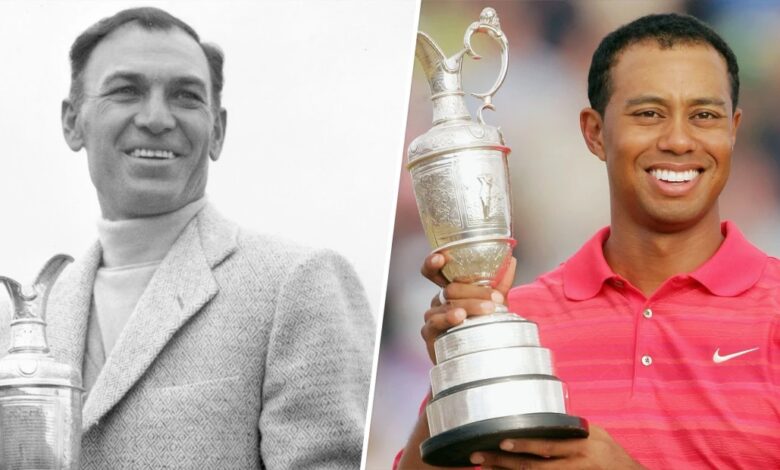Can Tiger Woods be the New Ben Hogan?

Now that the wait is over and Tiger Woods’ comeback to the PGA Tour is underway, I think the time has come to compare this comeback to the greatest comeback of all time: the 1950 return of Ben Hogan. In 1949, Ben Hogan was severally injured and permanently disabled when his car was hit head on by a speeding Greyhound bus. During his rehab, Hogan learned that he could still swing a golf club. He also learned that he wanted — more than anything — to return to tournament golf. And from what I understand, Tiger is the same way. He wants to win more major championships.
“I’m at 14, and the record’s 18, and of course I want to get there/ I set out to try and get to 19 … when I was 12, 13 years old. I thought that was the mark of all marks.” — Tiger Woods
So how did it go for Hogan? Well, a severely diminished Ben Hogan came back from that horrific accident to win the 1950 U.S. Open. Then he went on to win five more majors over the next four seasons. My best guess would be if Tiger needs a target, goal, objective or inspiration to exceed what Jack Nicklaus accomplished, then what Ben Hogan did would be it. I am going to take the position that Tiger doesn’t have to reinvent the comeback wheel. I believe that if Tiger does what Ben Hogan did, Tiger will get what Hogan got. Think about it. Five more majors. OK, so what did Hogan do?
“I was a much better golfer before the accident than I ever was afterward.” — Ben Hogan
First, Hogan learned that he didn’t need a new golf swing. He just started out doing what he could and just kept building on that. As I understand it, Tiger has done the same thing. Hogan’s goal was to get as good as he reasonably and safely could — not to be as good as he once was. Hopefully, Tiger can incorporate that mindset into his preparations. By parting ways with his most recent swing instructor, Tiger is telling us that he knows his golf swing better than any teacher — and that he’s finally ready to trust it. Butch Harmon, the top-rated teacher in the world, agrees that “[Tiger] knows more about the golf swing than I do.” Using modern technology, none of which was available to Hogan, Tiger will dig whatever he needs “out of the dirt.”
“The ultimate judge of your swing is the flight of the ball.” — Ben Hogan
Second, Hogan modified his practice to accommodate his broken body. He became much more focused on deliberate practice than in the past. He loved to hit balls, but now he had to be mindful of the toll for excess. He had to make each ball count for something, and he always wrote down what he was doing and how it was coming along. Tiger should take heed and, if necessary, retain a “practice manager” to maximize his practice time.
“I am trying to play myself back in shape. I just haven’t had enough competition. I’m hitting the ball as well as I ever did, but I’ve lost the knack of scoring.” — Ben Hogan
Third, Tiger has to get his game up to speed, and though I think swing instruction for him is unnecessary and potential damaging, I do think Tiger could benefit from individual expertise on an as needed basis. What really separates the players of today from those of the past is short game and wedge technique, not ball striking. More players today are capable of shooting low scores than Hogan faced.
Additionally, modern performance training and “best practices” coaching has demonstrated and proven that simulated environments that control the circumstances of the practice activity can substantially improve performance in actual competition. You must be aware that Hogan played a very limited schedule after the accident. In fact, he only played in six official events in 1953 (he won five). So where did the “competition” come from? I submit that it came from his preparation.
“Placing the ball in the right position for the next shot is 80 percent of winning golf.” — Ben Hogan
Finally, Hogan knew he wasn’t as good as before, and he knew everyone else knew that as well. But what he knew, which no one suspected, was that he didn’t have to be as good as he once was. He just had to be good enough. The same applies to Tiger, whether he knows it or not.
“The majors were the easiest to win because nine out of 10 players choke when the prize is in sight.” — Jack Nicklaus



